Simple, man-to-man offense drives defenses crazy
This is a man-to-man offense we use when we aren’t getting much out of our regular motion offense.
It’s a 5-man structured motion that utilizes the flex cut. It’s effective because it uses different screens and creates plenty of opportunities to hurt a switching defense, or one that offers a lot of defensive help from the weak side.
We’ve had more success with it when we use smaller, quicker players in the post. It brings the defensive post out on the perimeter, and it gives your players more room to make their cuts.5-man motion
At first glance this offense appears complicated, but it only took my team 20 minutes to learn. By the end of 40 minutes of practice, we were running it without any problems.

DIAGRAM 1: Initial Set. 4 and 5 line up at the low blocks, while 2 and 3 set up in the wing areas. 1 dribbles upcourt and sets up at the top of the key.
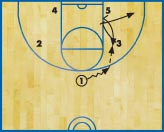
DIAGRAM 2: 1 dribbles to the right. 1 initiates the offense by dribbling to the right. 3 screens down for 5 and pops to the corner. 5 comes off 3’s screen and rolls to the wing area to receive a pass from 1. 1 passes to 5.
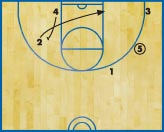
DIAGRAM 3: As 5 receives the pass from 1, 4 backscreens for 2 as high as possible on the weak-side wing. 2 goes either over or under this screen and breaks to the strong-side block.
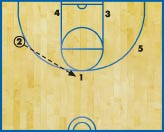
DIAGRAM 4: 4 pops up and backscreens for 1, who uses the screen and cuts down the lane toward the basket looking for a lob pass. 4 has the option to break to the ball if his or her defender has switched or hedged to help on 2. This puts severe pressure on the defense if 4 can shoot the 15-foot jump shot.
After setting the backscreen for 1, 4 steps out to the perimeter near the top of the key.
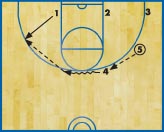
DIAGRAM 5: 5 passes to 4 at the top. As 5 makes the pass to 4, 1 pops to the wing area and looks for the ball reversal from 4. 4 takes a hard dribble to the middle of the floor and swings the ball to 1.
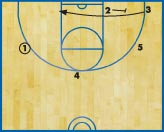
DIAGRAM 6: This is a great opportunity for a back cut if the defense is trying to deny 1 the ball. As the ball leaves 4’s hands, 2 steps up and sets a screen for 3. 3 makes a flex cut off 2’s screen and heads to the ball-side block.

DIAGRAM 7: After 4 passes to 1, he or she downscreens for 2 setting up good screen-the-screener action between 4 and 2. 2 uses 4’s screen and pops to the top of the key to receive a pass from 1.
Offense is reset
When 2 catches the ball at the top of the key, your players will be reset into the initial formation and ready to run the man-to-man motion again.
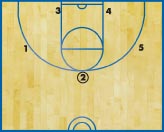
DIAGRAM 8: Offense is reset. We’ll often try to look for a quick reversal to 5. If 5 is overplayed, he or she can screen down for 4 and pop to the corner. When the ball gets to the wing, your players will be making the same cuts as before.
You’ll have more success from this point on, because you now have a guard in position to back screen for the top of the key. This creates good 3-point shots for your team as the screener steps out after screening.
Continued movements
Diagrams 9-14 are the continuation of the offense and the motion patterns.
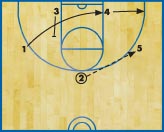
DIAGRAM 9: 2 initiates the offense with a pass to 5. 3 sets a screen for 1, who cuts to the ball-side block. 4 pops to the corner behind the 3-point line.
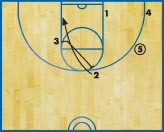
DIAGRAM 10: 3 breaks to the top and sets a screen for 2, who comes off the screen and cuts hard to the basket. 5 looks to throw a lob pass to 1.
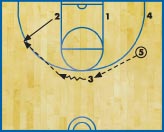
DIAGRAM 11: 5 passes to 3, who takes a couple hard dribbles left and passes to 2, who is breaking to the wing area behind the 3-point line.
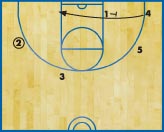
DIAGRAM 12: 1 sets a baseline screen for 4, who uses the screen and breaks to the ball-side block.
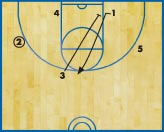
DIAGRAM 13: 2 looks to hit 4 for a shot in the post. 3 breaks through the lane and sets a downscreen for 1, who pops to the top of the key.

DIAGRAM 14: When 2 passes the ball back to 1 at the top of the key, you’ll be in your initial set to begin the continuity again.
Mix things up
You can do numerous things to mix up the offense and keep it unpredictable. At times, we’ve put our guards on the blocks to begin this offense but have found it is more effective with the post people stationed there. A lot of the initial placement depends on your personnel.
It’s good to run several different plays from this set so it doesn’t give the defense a pre-read on what you might be doing, and it also makes your team harder to scout. Since your players can quickly learn this offense, it shouldn’t take long to incorporate new plays into your team’s offensive repertoire.









